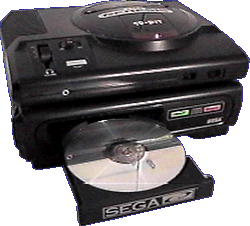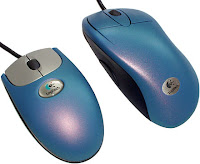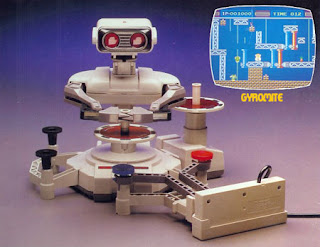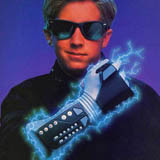- Ctrl+Shift+Esc -> Opens Task Manager
- Ctrl+Shift+Enter -> Run an executable with elevated privileges
- Windows logo key+1-0 -> Launch the shortcuts on the Quick Launch Toolbar
- Windows logo key+T -> Cycle through programs on the taskbar
- Windows logo key+Tab -> Cycle through programs on the taskbar by using Flip 3-D
- Ctrl+Windows logo key+Tab -> Use the arrow keys to cycle through programs on the taskbar by using Flip 3-D
- Windows logo key+Spacebar -> Bring all gadgets to the front and select Windows Sidebar
- Windows logo key+G -> Cycle through Sidebar gadgets
- Windows logo key+X -> Open Windows Mobility Center
- Open a folder and press & release Alt -> Show Menu Bar
Oct 9, 2007
10 Vista Tips Part 2
Sep 28, 2007
10 Vista Tips Part 1
Tip 3: Disable the UAC
The UAC (User Account Control) has been the butt of many jokes since its inception but it does serve a good purpose. Basically, the UAC forces everyone (even administrators) to operate with the standard user permissions. If you need to do anything that requires administrator permission then you must grant these permissions by supplying the administrators token. Now, if you are logged in as someone with administrator privileges then you simply click the continue button when the UAC prompts for your consent. If you are logged on as a standard user then you will be forced to supply an administrators username and password. The problem is many people are getting annoyed with the UAC so here are a few ways to disable the feature.
If you want to really take control of the UAC then you will need to edit the security policy. By doing this you can control things such as leaving the UAC on but forcing anyone with administrator credentials to always run in admin approval mode. This basically disables the UAC for administrators but leaves it on for everyone else. There are many more settings you can control with the security policy so open up your MMC and take a look.
Tip 4: Turn on Bitlocker without a TPM chip
Open up the Management Console and go to the Bitlocker section in the Administrative templates and enable advanced start up options.
Tip 5: Take Control of the New Firewall
Sep 27, 2007
Take that RIAA
Sep 25, 2007
Top Ten Gaming Hardware Failures

Number 10: Sega CD
 Now here was a huge wast of my money. I will never forget all the hype that surrounded this add-on. Basically the first version of the Sega CD attached to the bottom of the Sega Genesis and allowed us to play games on Cd's. While Sega was correct that Cd's were the future the implementation of the Sega CD was both ahead of its time and poorly planned. So what was the advantage of using the Sega CD? Well, Sega promised more colors, more content, and CD quality sound. Well, they got the sound part correct. Thanks to the CD audio games did sound much better but while there were more colors the difference was not that great. Most games released for the Sega CD were basically the same as the Genesis version with a few more bells and whistles but nothing to write home about. On game that did improve with the Sega CD was Sonic the Hedgehog. Sonic CD has often been referred to as the best game in the series but overall most games were a disappointment and the Sega CD was a waste of money.
Now here was a huge wast of my money. I will never forget all the hype that surrounded this add-on. Basically the first version of the Sega CD attached to the bottom of the Sega Genesis and allowed us to play games on Cd's. While Sega was correct that Cd's were the future the implementation of the Sega CD was both ahead of its time and poorly planned. So what was the advantage of using the Sega CD? Well, Sega promised more colors, more content, and CD quality sound. Well, they got the sound part correct. Thanks to the CD audio games did sound much better but while there were more colors the difference was not that great. Most games released for the Sega CD were basically the same as the Genesis version with a few more bells and whistles but nothing to write home about. On game that did improve with the Sega CD was Sonic the Hedgehog. Sonic CD has often been referred to as the best game in the series but overall most games were a disappointment and the Sega CD was a waste of money.
OK, so Microsoft decides to get into the game console market. The problem is they hired the Jolly Green Giant as a system tester. The original controller was patterned off the DreamCast controller with a few new buttons and a right analog stick. The buttons were not laid out in the traditional cross pattern that most gamers were use to with other controllers. Now, the layout of the buttons was not that bad the problem was getting your fingers to the button. The XBOX controller was freaking huge. It was so bulky that anyone with medium to small hands had a hard time using the controller. It reminds me of watching my 5 year old son try to play games on the current consoles. His hands are just to small to use it correctly. After being the butt of many jokes Microsoft finally released an updated version of the controller called the Type-S.
I could see it now. Designers are gathered around a table at Nintendo headquarters and someone stands up and suggest a new 3d portable system. Then another person suggest "Why don't we try to simulate one of the virtual environment masks we see in the movies". The results of this suggestion is something Nintendo called the Virtual Boy. The Nintendo Virtual Boy was the first portable console capable of displaying 3d images. The Virtual Boy was able to create a the illusion of depth through an effect known as parallax. The user would place their face inside a pair of rubber goggles and an eyeglass-style projector allows viewing of the monochromatic (black and red) image. Demand for this device never really got that big and Nintendo stop production about a year after the original release. There are many reasons the device failed such as it was way to big for portable gaming device and there is no way in hell you are going to walk and play at the same time. Also, since the games were all black and red (see picture at top of blog) they simply looked ugly.
 Here is an idea I thought would catch on and become the norm, a vibrating mouse. OK, actually think of it more as a force feedback mouse. If you are like me and play tons of computer video games such as FPS then the iFeel sounds like a good idea. Actually, that idea is good it just has not caught on like many thought it would. While most games support force feedback it tends to only work with controllers. Sure a few games support the iFeel but not enough to justify the extra money.
Here is an idea I thought would catch on and become the norm, a vibrating mouse. OK, actually think of it more as a force feedback mouse. If you are like me and play tons of computer video games such as FPS then the iFeel sounds like a good idea. Actually, that idea is good it just has not caught on like many thought it would. While most games support force feedback it tends to only work with controllers. Sure a few games support the iFeel but not enough to justify the extra money. Here is another example of a great idea that was ahead of its time (Wii). The Sega activator was an octagonal controller that emitted rays of light up toward the ceiling. The player would stand inside of the device and punch and kick through the light rays to simulate fighting. The device would then input the movement into the game and viola, we have the ability to simulate fighting by actually moving our body. The device had a few problems. First, it actually made most fighting games to hard to play. Second, not many games support the device. Last, any angled ceilings and ceiling fans caused problems with the device.

Ah, the giant taco. I so wanted one of these phone/gaming devices when I first read about them online. What a great idea. Instead of forcing people to carry both a portable gaming system and a phone at the same time, Nokia created the N-Gage that combined both into 1 device. Why did I call it a giant taco? One of the complaints about the device was when people actually used it as a phone it looked like they were holding a taco to their ear. This caused the device to be the butt of many jokes in the media. Another problem was the button placement worked fine for using the phone but for gaming they sucked. It was also expensive and the games available just weren't that good. It also suffered from a software bug that caused "the white screen of death" were the screen would turn white and require a system flash to fix it.

When Nintendo launched the NES back in the mid 80's they included a robot known as R.O.B. in one of the packages. The R.O.B. received commands from flashes on the TV screen. The arms would move and the hands would pinch together and separate to move things on fixtures attached to the base. Only 2 games worked with R.O.B., Gyromite and Stack-Up. On major problem was it was easy to cheat in these games since you could simply push the buttons on the controller yourself instead of waiting on R.O.B. to do it. There is still a since of nostalgia I feel when I see a picture of R.O.B. and Nintendo even made him an un-lockable character in one of there Mario Cart racing games. Overall, R.O.B. was nothing more then a gimmick to help sell the NES system.
One of my favorite games of all time was the original Mike Tyson's Punch Out!! Imagine being able to play this game by actually simulating punching. With the Power Glove my wish came true, sort of. I begged my parents to get me a Power Glove for my birthday and I will never forget my fist experience using the glove. I opened the box and this futuristic looking glove with a fully functional controller attached to the arm looked cooler then anything I had ever seen. It was attached to an L shaped device that sat on one of the top corners of your tv and helped detect motion. I rushed upstairs and fired up Mike Tyson's Punch out!! Then reality set in. I had to be very precise with my movements or it would not work correctly. Many times I would punch and my character just sat still. Other times it would use my special super punch when all I wanted was a basic jab. The experience never really got any better. A few games were made specifically for the glove but none of them were really any good. To its credit, the basic premise of the glove is now being used today with the Nintendo Wii and technology has advanced to the point were the Wii controller works great.
_box.jpg)




